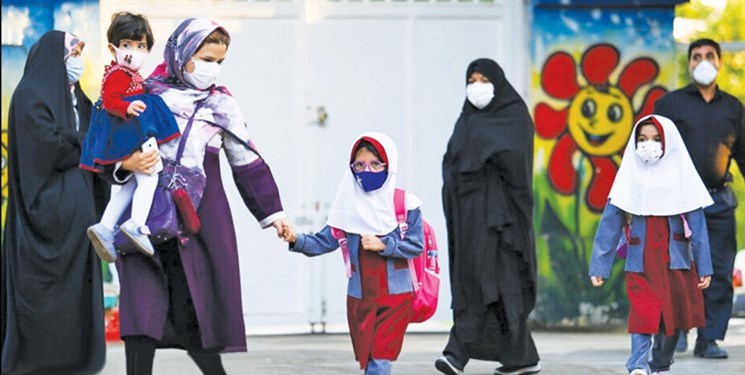
Fars news agency community group; Zohra Hosni Saadi*: Mother’s Day is an opportunity to talk about the different dimensions of this role. The value and sanctity of motherhood is clear in Iranian-Islamic culture. Becoming a mother is considered as a woman’s honor and children have special respect for her. Although this position still exists in Iranian society in relation to mothers, some problems and shortcomings in the discourse of motherhood have caused this value to be transferred to the new generation with less clarity.
These defects, which will be discussed further, are the result of two important social processes. The first reason is the expansion and entry of modernity into various parts of society. The other can also be sought in the non-reproduction and redefinition of the mother’s discourse.
The entry of modernity culture can be examined as a challenging whole in different layers. The deepest layer is anthropological topics, which cannot be discussed in one note. But what appears in the outer layer and what many people faced will be examined further.
City Instead mothers is not
In this regard, the city should be mentioned. A city is a place where life experiences and human activities are accumulated. The city is not only a mathematical and architectural construction. Rather, it conveys the spirit and manner of making those beliefs and values. Basically, the city that expanded after the industrial revolution expresses some modern values. The contrast between the city and the village had a value at one point in time. For this reason, it is not possible to look at the city only from a mathematical and engineering angle.
Considering this issue, it is possible to check how much the city has paid attention to motherhood in Iranian society. Has the urban development in Iran progressed according to the same history of motherly and family-oriented culture? Or have the imported urban constructions caused a cultural conflict by blindly imitating them unconsciously?
The answer becomes clear by examining some urban infrastructures. One of these constructions is public transportation. A scene that seems unfamiliar to everyone in this environment is the presence of a mother and child. It is enough for a mother to leave the house with her child and intend to go to a destination by means of public transportation such as subway or city bus. If he wants to meet the basic needs of his child, such as breastfeeding or changing diapers, there is no place for him. Also, this problem is aggravated when carrying a stroller. The construction of metro and city buses do not allow him to enter the stroller.
In addition to public transportation, the most feminine modern urban constructions have also neglected mothers. Shopping arcades are one of the most important centers that women refer to. But even in these very large centers, there is no mother and child room where a mother can breastfeed her child for a moment. In the absence of this minimal possibility, the existence of playrooms for children is a distant hope. Also, beauty salons and special clubs for women do not have these facilities.
Therefore, it can be said that the construction of a city in society is completely based on the presence of a productive adult man in the economy. The individualism that is behind the thinking of urbanism has removed the family from the city. Women and then mothers are the people who have been neglected the most in the construction of a city.
Delete mothers From Institutions social And political
In addition to urban construction, the structures of community centers and institutions are also in contradiction with the discourse of maternal value. One of the building blocks of these institutions is their laws and regulations. In fact, there is an individualistic attitude and approach in these laws. To make this discussion concrete, an example is given about the employment regulations of the academic faculty of universities.
In this regulation, with the aim of facilitating the entry of faculty members into managerial and political positions in order to strengthen the scientific approach in the country’s policies and management, privileges such as extra managerial pay, providing less academic units and counting full-time service history in case of using the method Part-time attendance is included for these people. But the faculty woman who uses the part-time method due to becoming a mother is counted for half of her full-time service record. It is a value contradiction to burden the privileges of managerial positions and not pay attention to the needs of mothers in this example. This approach exists in most laws and regulations of other institutions as well, which leads to the exclusion of mothers or their marginalization.
Ignoring the different dimensions of mothers
In addition to these manifestations of the culture of modernity that ignores mothers, it should be pointed out the criticism of mother discourse that existed in the history and past before the Iranian revolution. It should be noted here that the investigation of this issue is very deep and only the next part of it will be discussed in this note.
In this regard, it should be mentioned that over time and with the development of society, femininity and basically motherhood faced challenges and questions. Here, progress is not considered only by modern standards. Rather, the whole of this word is considered. In fact, with the passage of time, when science and knowledge grew and the ground for the presence of more women in the public arena was provided, challenges appeared in relation to the discourse of motherhood.
In this process, women became more sensitive to their personal and social identity. For this reason, a way of mothering that considers her to be in the service of this role all the time has faced questions from the side of women.
In fact, the duties that a mother puts on women’s shoulders are so wide and numerous that they encompass their whole life and time. These duties were fully accepted at a time when women did not have much of a place in the public arena or were not aware of their individual identity. But at this time, thanks to the Islamic revolution, women have become aware of these dimensions; The extent of duties defined for them under motherhood has been questioned.
But in the meantime, in Iranian-Islamic culture, the fundamental redefinition of the mother’s role has been neglected. This issue causes mothers who want their personal and social identity to face pressure from the society and are always accused of being a bad mother. As a result, motherhood is not considered as a good and growing experience for women. This problem is aggravated in the face of modern culture which is constantly representing the importance of women’s presence in society.
As a result, we can say; The mother’s role continues to be valuable for a long time, and in reality, it can be seen to solve these shortcomings. It is impossible to constantly talk about the importance of mother’s role at high levels of policy making, but not prepare the smallest urban structures for their presence.
Nor can the general culture of the society ignore the individual and social identity of the mother and invite her to become a mother. Therefore, by redefining this role from the side of cultural institutions and reforming the country’s structures, the value of motherhood for women becomes more tangible and acceptable and desirable for the young generation.
*Senior of Public Policy, University of Tehran
end of message/
You can edit this article
Suggest this article for the first page

